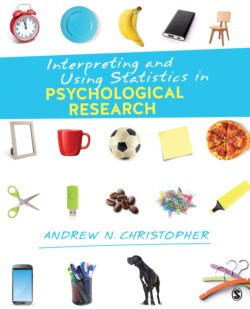Читать книгу Interpreting and Using Statistics in Psychological Research - Andrew N. Christopher - Страница 11
На сайте Литреса книга снята с продажи.
Statistical Thinking and Everyday Life
ОглавлениеWe easily can get our hands on information via the Internet for any situation we may be in. However, we need to know how to interpret and make use of such information, especially as not all of it is objective or even correct. The world is full of statistical information, much of it we hardly ever notice or pay much attention to (until now). In addition to potential value in the workplace, learning about statistics and the logic behind them will help you navigate everyday situations you will encounter, some of which we’ll discuss in this section.
Before we begin this section in detail, let me say that, in general, the human mind works magnificently well. We rarely notice how well it works until something goes wrong. I say this because as you read this section of the chapter, you might think people are generally stupid, but that is just not the case. But here, I want to draw your attention to some flaws in our ability to process information as they relate to statistical thinking. By learning about statistics in subsequent chapters, I hope that you will be able to spot these shortcomings in your thinking and in the thinking of other people.
“What has been very successful for me through my whole life is to not be arrogant about knowing, but to embrace the fact that I have weaknesses, that I don’t know a lot about this, that and the other thing. The more you learn, the more you realize you don’t know.”
—Ray Dalio, Founder and Co–Chief Investment Officer, Bridgewater Associates, the world’s largest hedge fund
I have classified these flaws in human thinking loosely into two categories: failing to use information about probability and misunderstanding connections between events. However, in practice, they are more interrelated than I will present them here.
